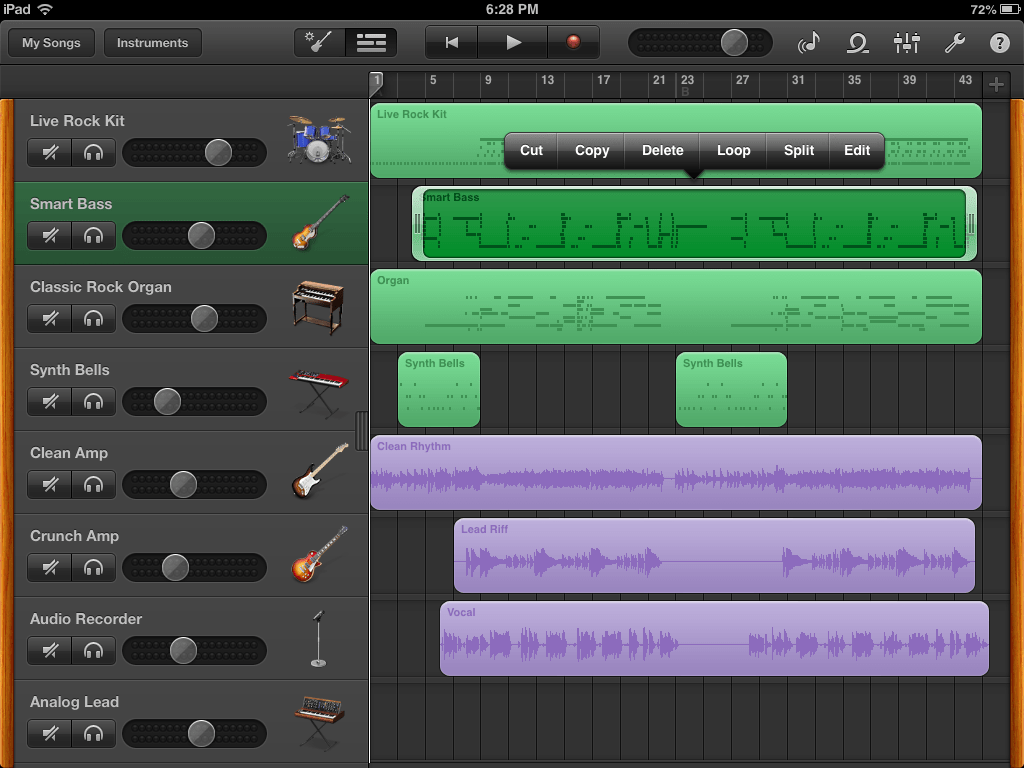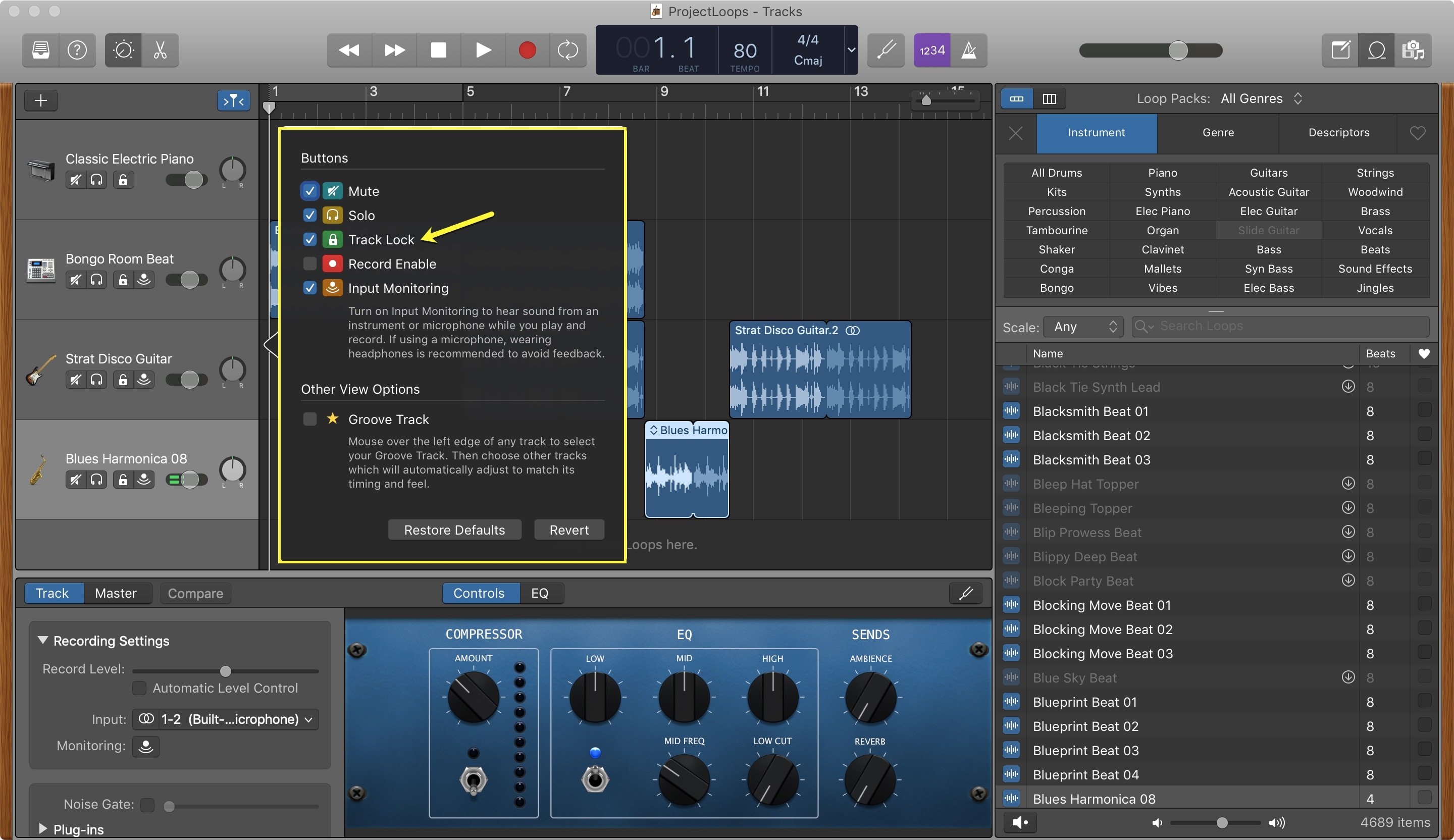- How To Use Garageband On Mac
- How Do I Merge Tracks In Garageband Mac
- How To Combine Tracks In Garageband Mac
- How To Merge Tracks On Garageband Mac
In iLife, being able to copy and paste regions in GarageBand is useful: You can perform a task once and repeat it thousands of times. You can even copy multiple regions in different tracks at one time.
For example, if a set of regions for bass and drum tracks are perfect for a few measures and you want to use them throughout the song, you can select the regions and then copy and paste them. Because you can copy regions from multiple tracks at a time (as in a vertical selection of regions), you can copy entire sections of a song to another place in the song.
Feb 24, 2011 Please view in 720p! You will be able to distinguish details much easier when viewed in a higher resolution. This video is an easy instructable on how to merge the ends of songs together to create.
Here’s how to select, copy, and paste in GarageBand ’11:
Selecting regions: Click a region to select it, and Shift-click to select multiple regions. You can also select multiple regions at a time by dragging an imaginary selection rectangle around all the regions you want to select. As you drag from a point in the timeline, any regions intersecting your imaginary rectangle are highlighted to show that they’re selected.
Copying regions: To copy a region, select it and then choose Edit→Copy (or press Command+C).
Pasting regions: To paste the copy in the track at a different location in the timeline, move the playhead to the point where you want the copied region to start and then choose Edit→Paste (or press Command+V).
To copy and paste multiple regions at a time, select the regions first, and then copy and paste them. If you hold down the Option key while dragging a region, you automatically make a copy of the region; when you drop the copy, it’s just like pasting it into the new location.
After you paste one or more regions, the playhead moves to the end of the first pasted region, which is convenient because you can choose Edit→Paste again (or press Command+V again) to paste another copy right next to the first one.
Cutting and pasting regions: To delete regions from one location and paste them into another, choose Edit→Cut rather than Edit→Copy. However, simply dragging the selected regions to the new location in the timeline might be faster.
Deleting regions: You can delete a region by selecting it and pressing the Delete key on the keyboard or by choosing Edit→Delete. If you want to move all other regions to the left in the timeline after deleting the region, choose Edit→Delete and Move — all regions on the same track move left by the length of the deleted region.
Mastering GarageBand on your Mac is much about getting comfortable with tracks and loops. Most musical compositions consist of several tracks, or layers of individual parts recorded by different instruments.
You can connect instruments to your Mac or you can take advantage of numerous digitally sampled software instruments, heard as you play one of the aforementioned miniature onscreen keyboards. You can choose a wide variety of software instruments in all the major families. You may have to download some instruments from the Internet. Besides the software instrument tracks, you can choose audio tracks or automatically generated drummer tracks.
Follow these steps to add a new track:
How To Use Garageband On Mac

How Do I Merge Tracks In Garageband Mac


How To Combine Tracks In Garageband Mac
Click the New Track (+) button in the upper-left corner of the program, choose Track→New Track, or press the keyboard combination Alt/Option+cmd+N.
A window slides into view.
Select Software Instrument.
Click an instrument name in the library to change the instrument so that when you click the faux piano keyboard or musical typing keyboard, the audio that emerges sounds just like the new instrument you’ve selected.
A new track shows up in the Tracks list, accompanied in the header by its icon, name (Classic Electric Piano until you change it), and several tiny controls. Among other functions, these controls let you mute the track, make it a solo, set volume levels, and more.
How To Merge Tracks On Garageband Mac
You can add or change an instrument now. In the Library pane, choose an instrument category from the left column of the Track Info pane and a software instrument in the right column. You also get to see an illustration of your chosen instrument. If you can’t immediately find a new instrument to use, use the Search Library field to search for the music-maker you have in mind.
If the name of an instrument appears dimmed, you don’t have access to that instrument on your Mac.
Apple sells, as an in-app purchase, a complete GarageBand package that includes 150 sounds, 1,500 loops, and 38 basic piano and guitar lessons for $4.99. Make sure you have sufficient storage on your computer. The downloaded content claims 9.5GB of space.